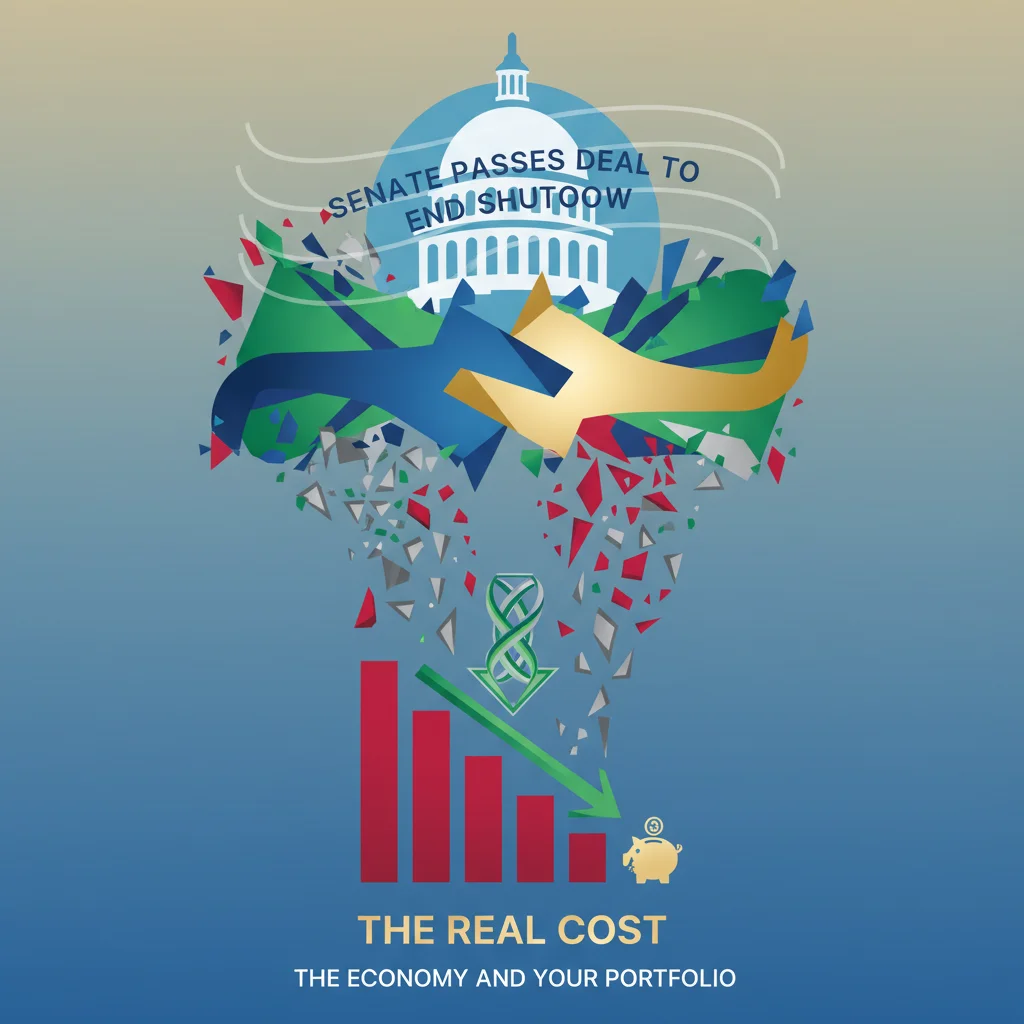
A Fragile Truce: Senate Passes Deal to End Shutdown, But What’s the Real Cost to the Economy and Your Portfolio?
In a long-awaited move that sent a ripple of cautious optimism through the nation’s capital, the U.S. Senate has passed a measure aimed at ending the longest government shutdown in American history. The breakthrough, as reported by the BBC, signals a potential end to the political standoff that has furloughed hundreds of thousands of federal workers and stalled essential government services. However, for investors, business leaders, and anyone with a stake in the American economy, this is no time for complacency. The deal is a temporary reprieve, not a permanent solution, and the economic damage has already been done—leaving behind crucial lessons about the intersection of politics, finance, and market stability.
While the immediate crisis may be averted, the episode serves as a stark reminder of the fragility of our economic landscape in the face of political dysfunction. This blog post will delve beyond the headlines to analyze the true impact of government shutdowns on the stock market, the broader economy, and the future of investing in an era of heightened political risk. We will explore the quantifiable costs, the hidden consequences, and what this event means for everything from traditional banking to the burgeoning world of financial technology.
The Anatomy of an Economic Disruption
A government shutdown occurs when Congress fails to pass appropriations legislation to fund government operations. This political impasse forces federal agencies to cease non-essential functions, leading to a cascade of negative effects. The most visible impact is on the 800,000 federal workers who are either furloughed or forced to work without pay, immediately curbing their spending power and damaging consumer confidence.
But the impact extends far beyond the federal workforce. According to a report from the Congressional Budget Office (CBO) on the 2018-2019 shutdown, the five-week closure permanently reduced the nation’s GDP by an estimated $3 billion. The CBO noted that “underlying economic activity was suppressed by the shutdown” due to lost federal spending, delayed compensation, and reduced demand. This highlights a critical concept in economics: uncertainty is a tax on growth. When businesses cannot secure federal permits, when contractors are not paid, and when economic data from agencies like the Bureau of Economic Analysis is not released, the gears of commerce begin to grind to a halt.
The Great Convergence: When Minimum Wage, Trade Wars, and AI Risks Collide
Gauging the Market’s Reaction: Volatility and Investor Sentiment
A common question for those involved in trading and investing is how a government shutdown affects the stock market. The answer, historically, is nuanced. While a shutdown introduces significant uncertainty, the market’s reaction is not always as catastrophic as one might expect. Often, the market prices in the likelihood of a shutdown ahead of time, and the actual event becomes a “sell the rumor, buy the news” scenario.
However, prolonged shutdowns can erode investor confidence and increase volatility. The VIX index, often called the “fear gauge,” typically spikes during periods of intense political negotiation. This uncertainty can cause a flight to safety, with investors moving out of equities and into less risky assets like government bonds. For the average investor, this period is a test of discipline, reinforcing the importance of a long-term strategy over reactionary trading based on political headlines.
To provide some historical context, let’s examine the performance of the S&P 500 during previous major government shutdowns.
| Shutdown Period | Duration | S&P 500 Performance During Shutdown |
|---|---|---|
| Nov 1995 | 5 days | +1.3% |
| Dec 1995 – Jan 1996 | 21 days | +0.1% |
| Oct 2013 | 16 days | +3.1% |
| Jan 2018 | 3 days | +0.8% |
| Dec 2018 – Jan 2019 | 35 days | +10.3% |
As the data from sources like LPL Financial Research shows, the market has often ended shutdowns higher than it started. This counterintuitive result can be attributed to the fact that shutdowns are typically resolved, and the market anticipates a return to normalcy and often a burst of pent-up economic activity. The 2018-2019 shutdown is a particular outlier, as its conclusion coincided with a broader market recovery from a late-2018 correction. The key takeaway is that while short-term volatility is likely, long-term investors are often rewarded for staying the course.
The Unseen Victims: Banking, Fintech, and Innovation
The consequences of a government shutdown ripple into less obvious corners of the finance world, including banking and the rapidly evolving financial technology (fintech) sector.
For traditional banks, a shutdown creates operational headaches. The IRS, a key component of the Treasury Department, may see delays in its ability to verify income for mortgage applications, slowing down the housing market. Small Business Administration (SBA) loan guarantees are halted, cutting off a vital source of capital for entrepreneurs. A Federal Reserve report has previously highlighted how such disruptions can tighten financial conditions and affect the flow of credit throughout the economy.
The fintech industry, often seen as a nimble alternative to traditional finance, is not immune. Many fintech companies rely on government data streams or interact with regulatory bodies like the Securities and Exchange Commission (SEC) or the Commodity Futures Trading Commission (CFTC). During a shutdown, the SEC halts the processing of registrations for IPOs and other securities offerings, effectively freezing a key part of the capital markets. This can derail the growth plans of promising tech startups looking to go public.
Furthermore, in a world where innovators in areas like blockchain and decentralized finance (DeFi) are seeking regulatory clarity, a government shutdown puts all progress on hold. Key personnel at the Treasury and SEC who are working on crafting the rules for digital assets are furloughed, leaving a vacuum of uncertainty that can stifle innovation and push development to more predictable regulatory environments overseas.
The 5 Strategic Questions Redefining the Future of Business and Finance
Looking Ahead: A Lesson in Political Risk Management
The Senate’s deal is a crucial first step, but the bill still faces hurdles in the House of Representatives, and the underlying disagreements that caused the shutdown have not been resolved. This episode should serve as a wake-up call for business leaders and investors about the importance of incorporating political risk into their strategic planning.
What does this mean in practice?
- For Businesses: Companies that rely heavily on government contracts or services should consider diversifying their revenue streams and building contingency plans for future disruptions. Maintaining a stronger cash position can provide a buffer to weather delays in federal payments.
- For Investors: This event underscores the value of a diversified portfolio that is not overly concentrated in sectors highly sensitive to government spending. It also reinforces the wisdom of maintaining a long-term perspective rather than making rash decisions based on daily political drama.
- For the Tech Sector: For the fintech and blockchain communities, it highlights the double-edged sword of regulation. While clarity is needed, dependence on a political process prone to gridlock can be a significant business risk.
The Canary in the Coal Mine: What One Food Bank's Defiance Signals to the Global Economy
In conclusion, the end of the government shutdown will bring immediate relief to millions of Americans and provide a short-term boost to the markets. However, the scars from this self-inflicted wound will remain. It has cost the country billions in lost productivity, shaken confidence in our governing institutions, and served as a powerful lesson in the profound and inescapable link between Washington D.C.’s political theater and the health of the global economy. As we move forward, the focus must shift from simply ending the crisis to addressing the root causes of the dysfunction to ensure that this costly exercise is not repeated.


